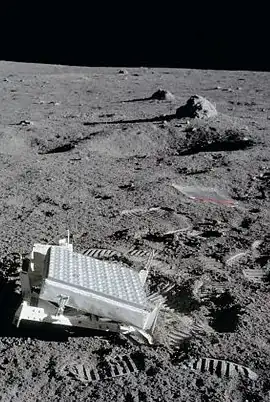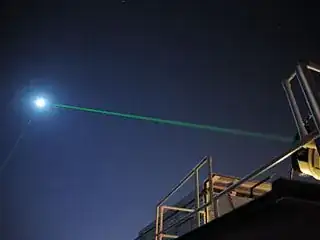Note: this answer was posted under duress; though I mentioned in a comment under the question that I was composing an answer, several users have decided to close the question out from under me. Therefore I've put this together a little hastily. It's late here and I'll come back in the morning to address any questions or requests for clarification, and probably add some more information.
Is it scientifically possible to predict (simulate...) in future with 100% accuracy as to the location of the moon?
Nothing is 100% accurate or possible. But it is highly likely that the apparent position of the Moon from a given geographic position on Earth can be predicted to very high precision over the next five years. Each aspect:
- Geometry
- Geography
- Time
- Meteorology/atmospherics
is predictable based on well-understood scientific principles which have been tested against a substantial extent of data.
Without a specific specification in the question, I can present these aspects of the problem and give an example of the precision to which they can be predicted.
Geometry
We have records of bits and pieces of the Moon's motion for several thousand years from accounts of eclipses, and several hundred years with much more precision with respect to time and to other stars from records of lunar occultations of stars as seen through telescopes.
Combine this with laser ranging measurements of the moon which fit theoretical predictions to centimeter accuracy over a period longer than forty years, and it seems that the relative positions of the Earth and Moon are probably going to continue to be within a few centimeters for the next five years as well.
You can read further about that in
- Progress in Lunar Laser Ranging Tests of Relativistic Gravity
- Lunar laser ranging: the millimeter challenge
Now the position of the Earth relative to the Sun is a different matter. If you want to read about how these calculations are done you can have a look at this answer to How to calculate the planets and moons beyond Newtons's gravitational force? These days the movements of the Sun, Earth, planets, and other bodies with enough mass to affect their motions substantially are know extremely well.
Let's look at one of the major JPL Development Ephemerides. In the abstract of The Planetary and Lunar Ephemerides
DE430 and DE431 there are a few sentences that give us some idea of what's discussed in this pretty in-depth report:
The planetary and lunar ephemerides DE430 and DE431 are generated by fitting
numerically integrated orbits of the Moon and planets to observations. The present-day
lunar orbit is known to submeter accuracy through fitting lunar laser ranging data with
an updated lunar gravity field from the Gravity Recovery and Interior Laboratory (GRAIL)
mission. The orbits of the inner planets are known to subkilometer accuracy through fitting radio tracking measurements of spacecraft in orbit about them.
Geography
The visibility of a crescent moon from a given spot on Earth needs more than the positions of the center of masses of the Moon, Earth, and Sun. We need the position of the viewer. These days we can get GPS coordinates of the site, but those coordinates are fixed to the Earth, and the Earth rotates around its axis and its axis nutates and wobbles.
That motion is pretty small on the scale of five years, you can see the image below showing the motion of the Tropic of Cancer each year.
Time
The rotational speed of the Earth increases and decreases in a somewhat unsteady way, and this is why the placement of leap seconds looks a bit uneven. However, the fact that we are talking about one second makes it clear that the uncertainty over five years is likely to be a handful of seconds.
Still, this may be the single biggest risk in the accuracy of the prediction five years into the future!
There could be a major seismic event, magma movement, or big chunk of ice that falls into the ocean. Specific details about how these can affect the rotational speed of the Earth (and the exact direction of its axes) need to be addressed in detail in separate questions, but this could be an upset.
Of course we would know about it, and a request for an updated five year report could be issued. The time error wouldn't suddenly jump to some big number, it would slowly start accumulating, and there would be time to recalculate before it became significant.
Atmospherics and Meteorology
This is the hardest one. Refraction from the atmosphere can move the apparent position of objects significantly, up to a fraction of a degree. But the amount of refraction is fairly well predictable. It depends a little bit on the Weather because index of refraction's deviation from 1.0 depends almost linearly on the density of the air, and slightly on the humidity. But this is a very small correction on top of a small correction.
Lunar Libration image from here

Lunar Laser Ranging images from here


 Source
Source
 Source
Source




